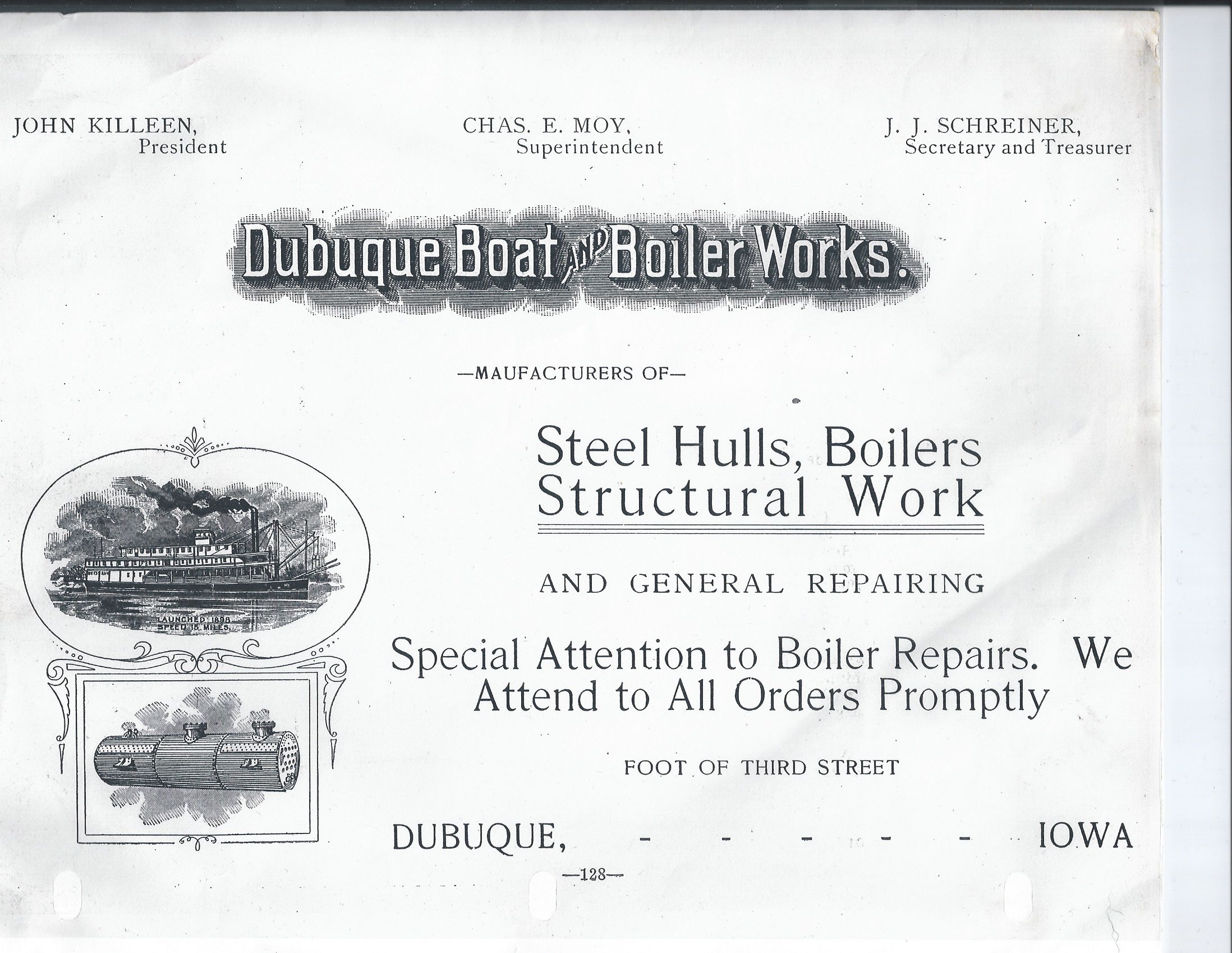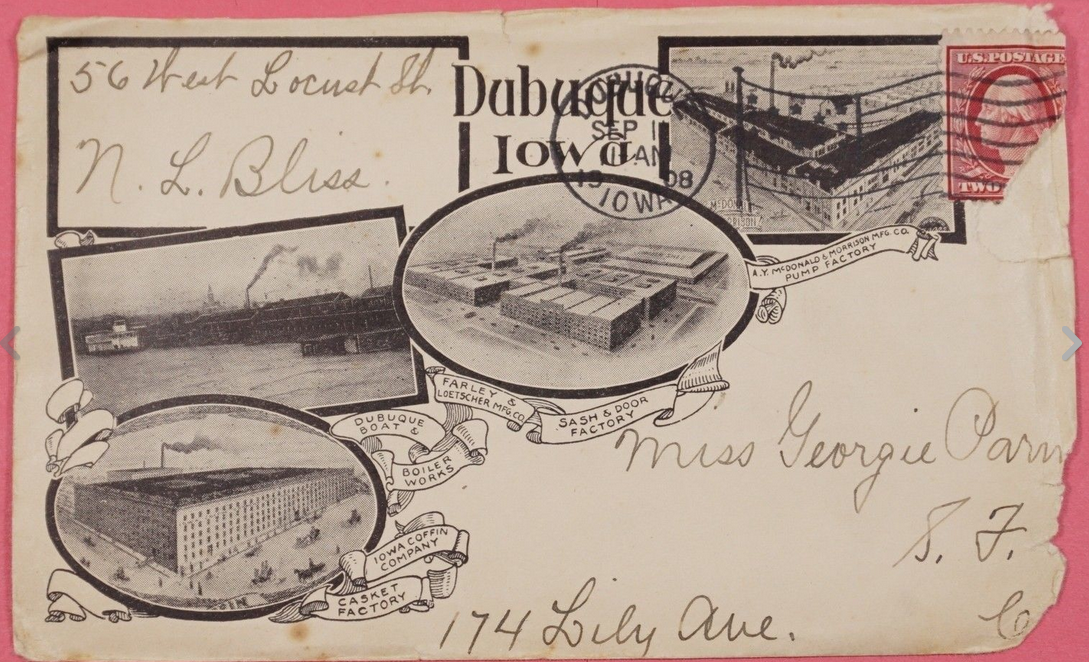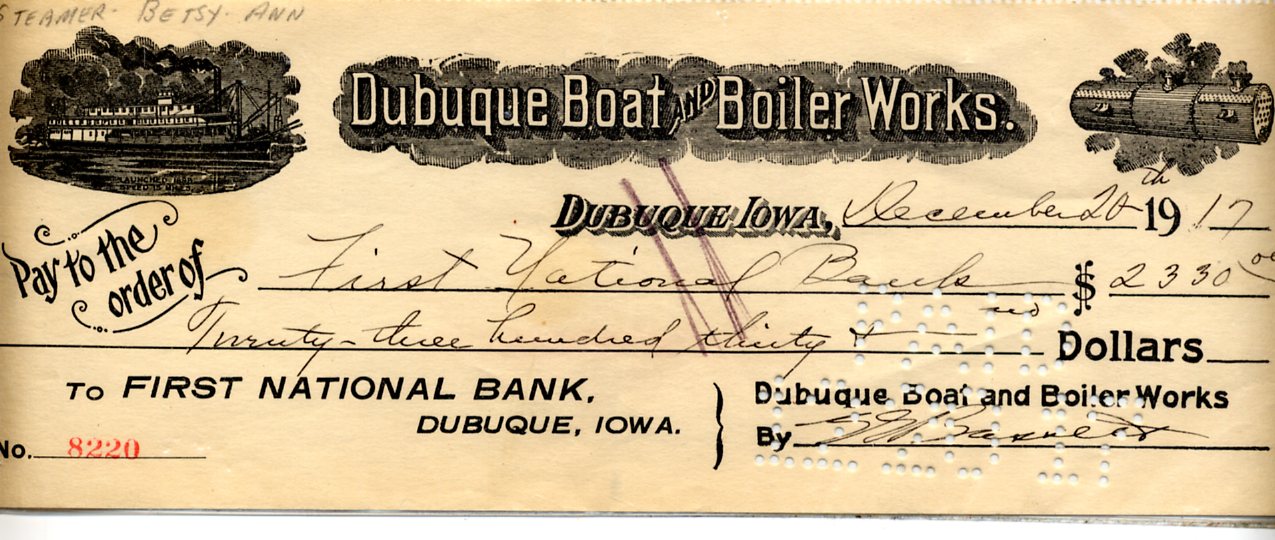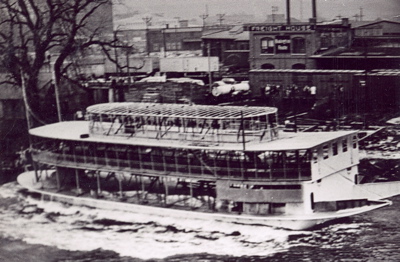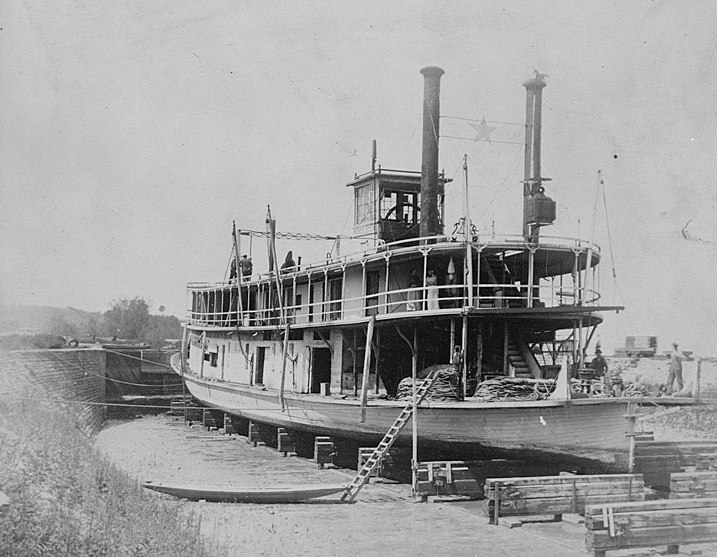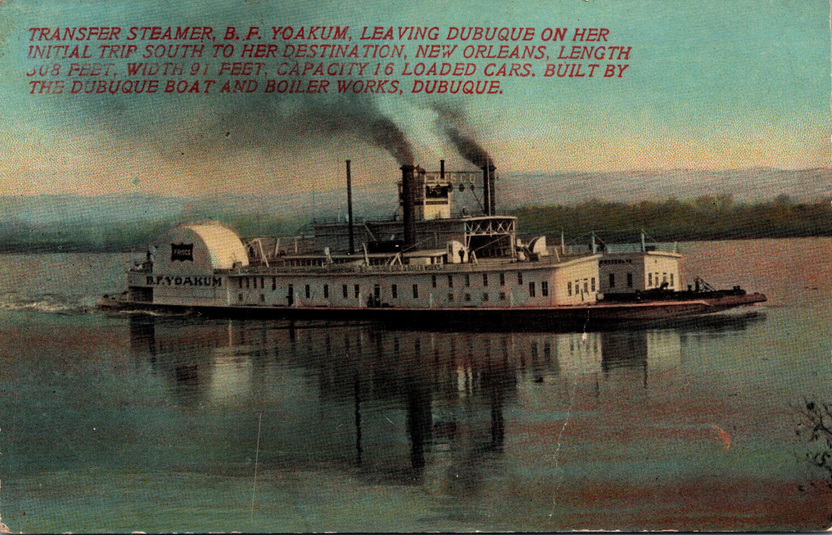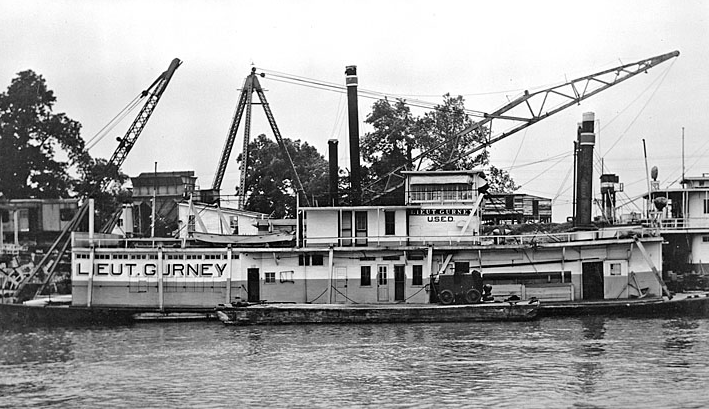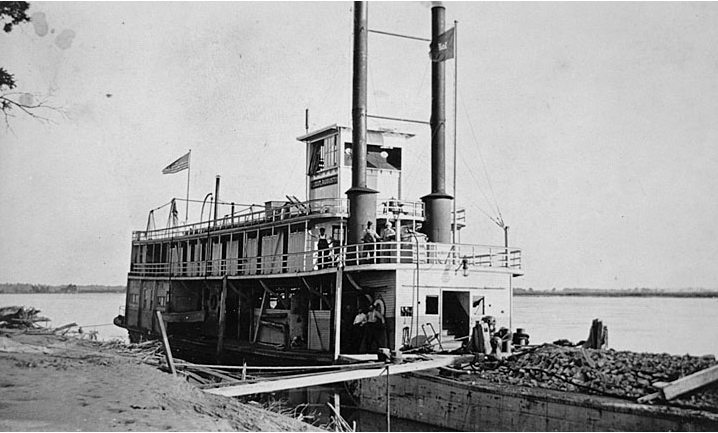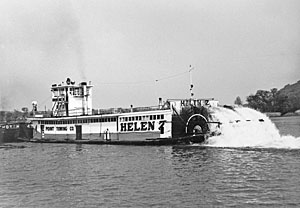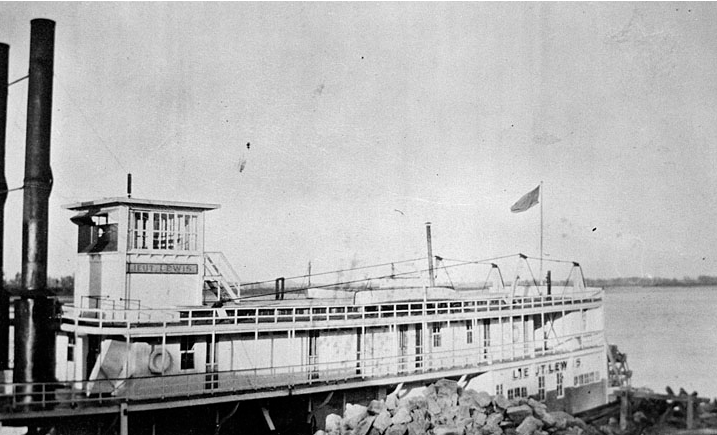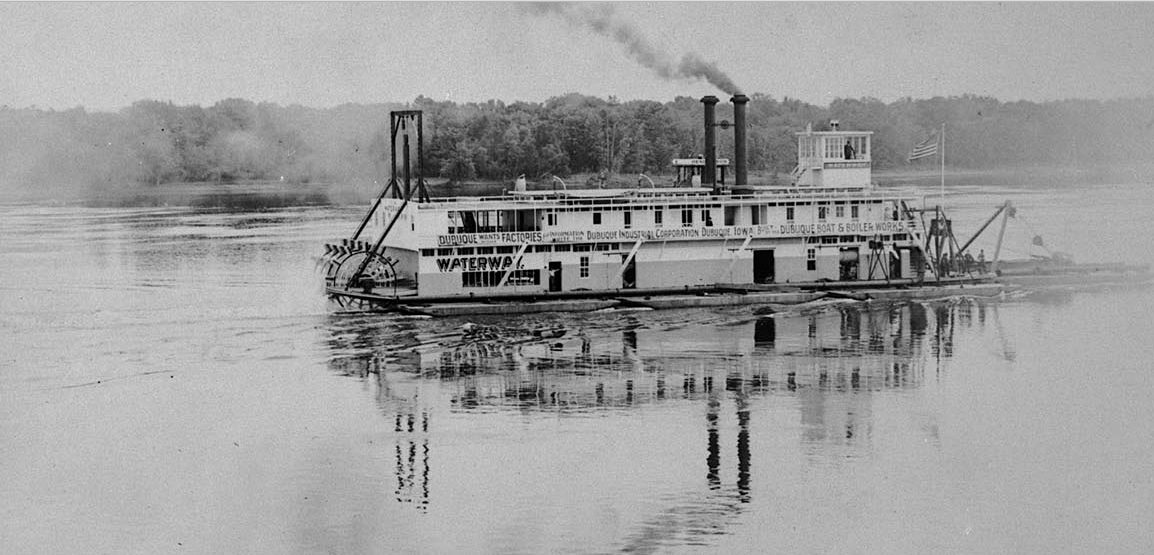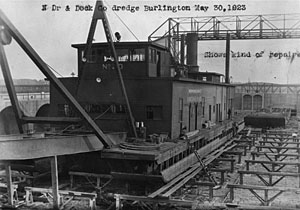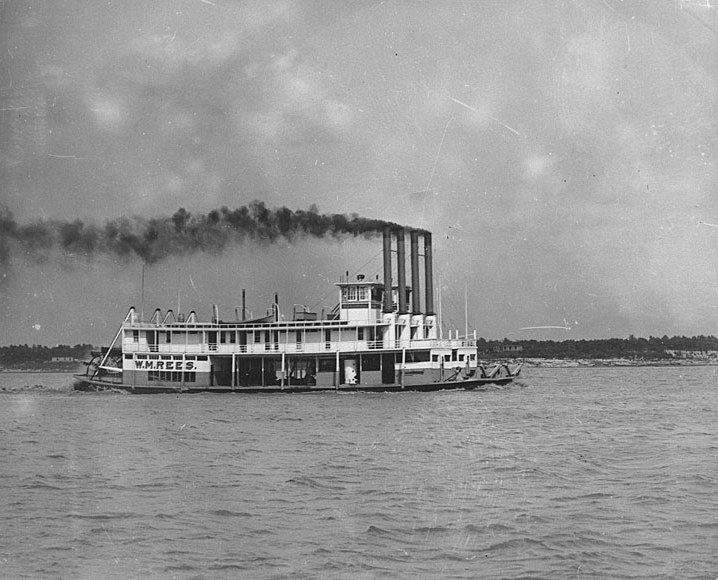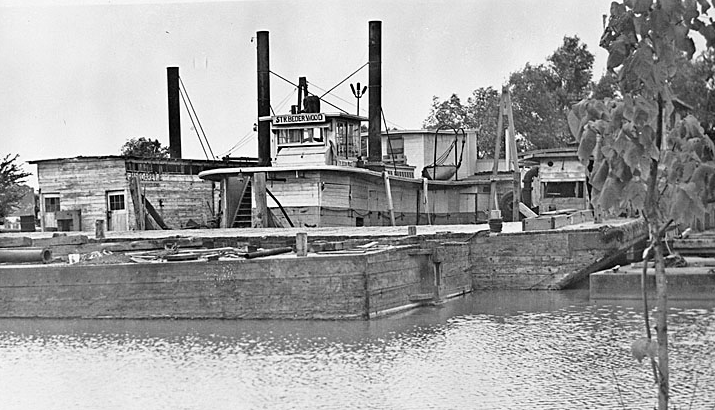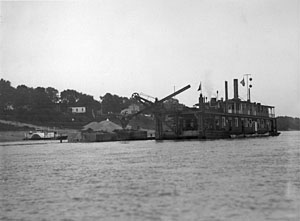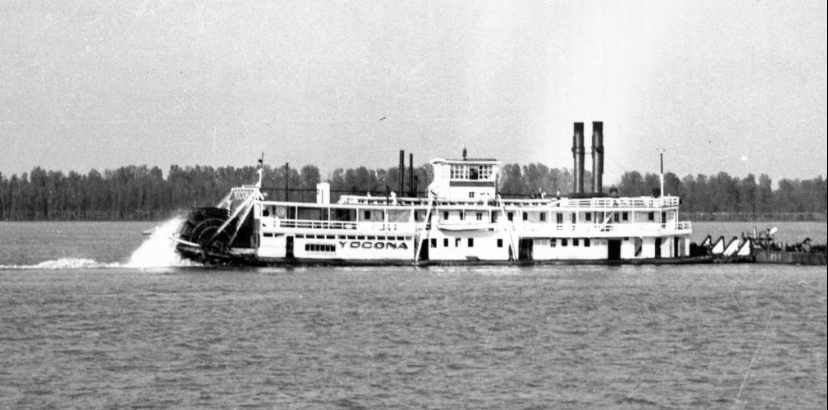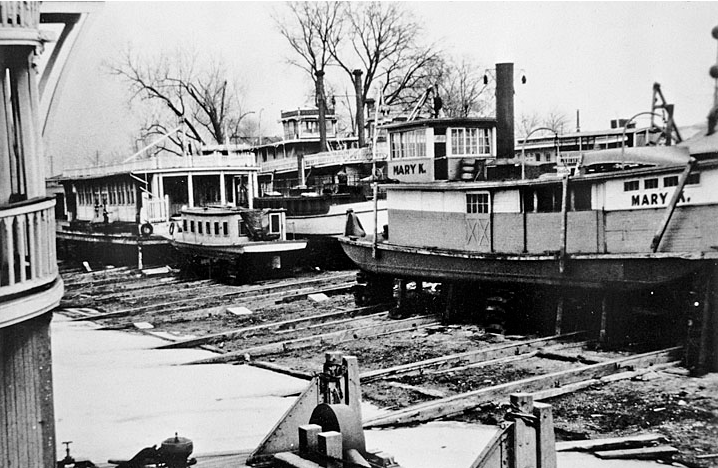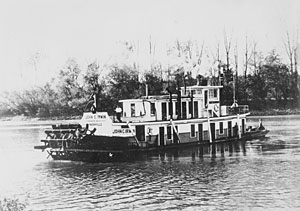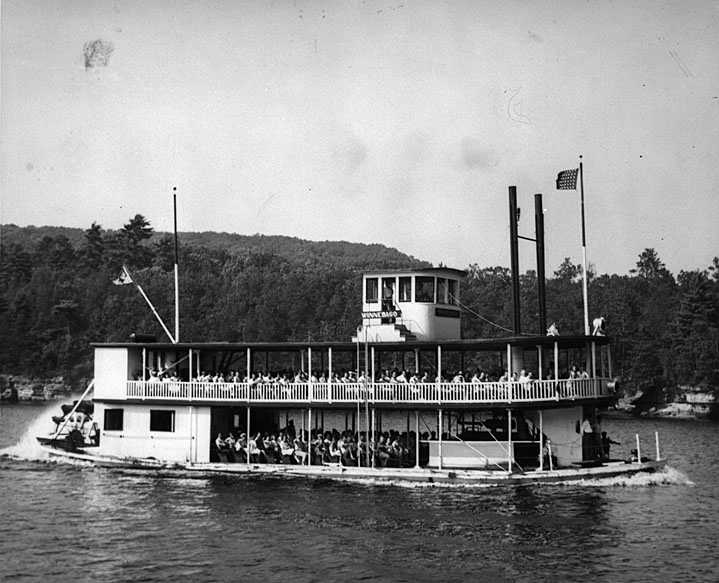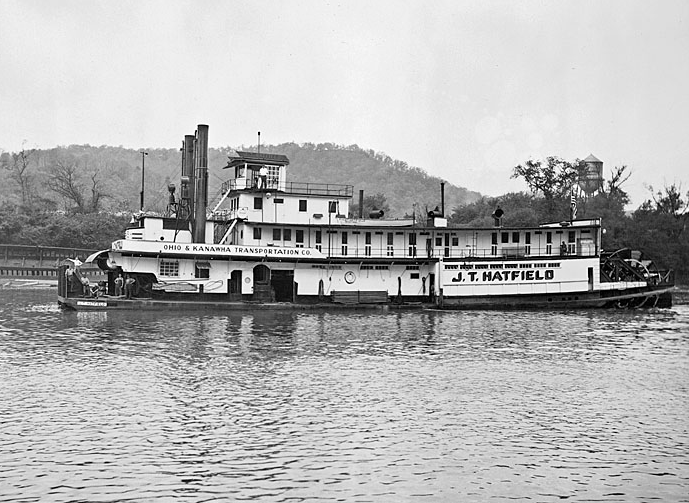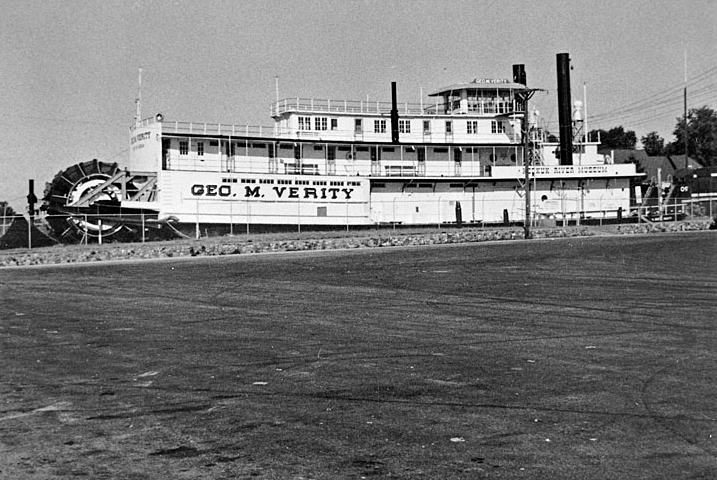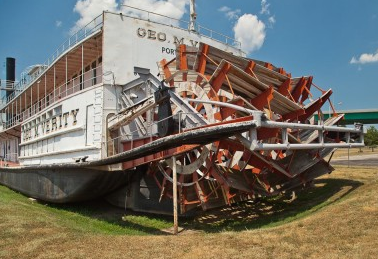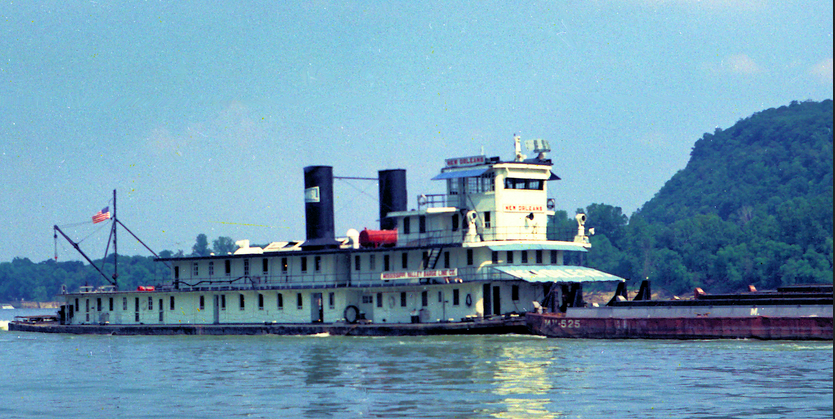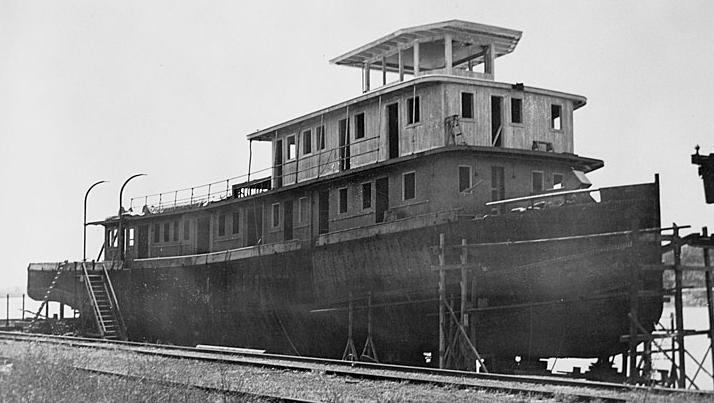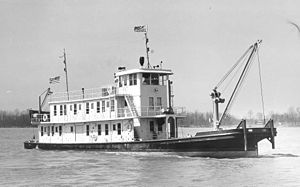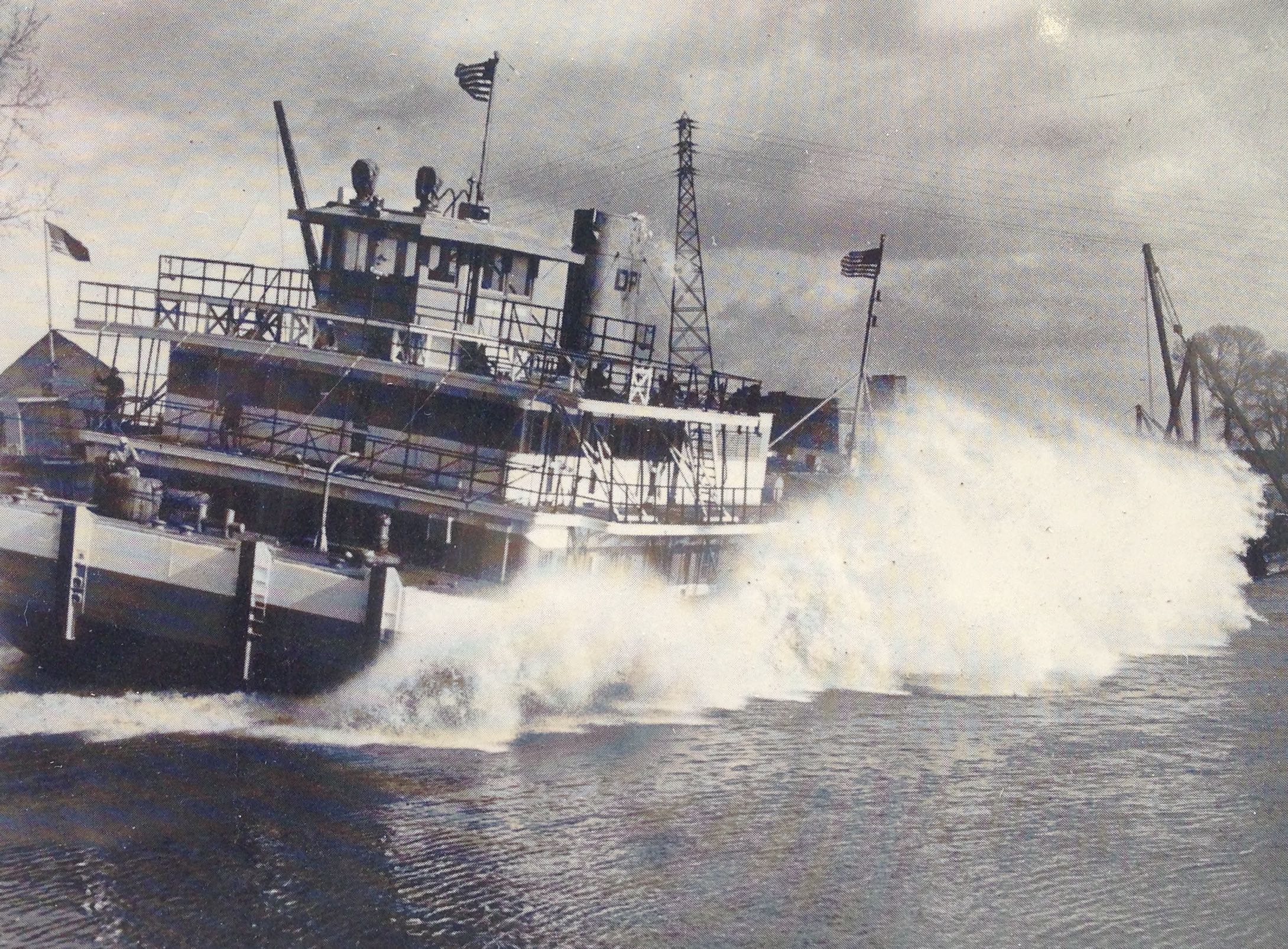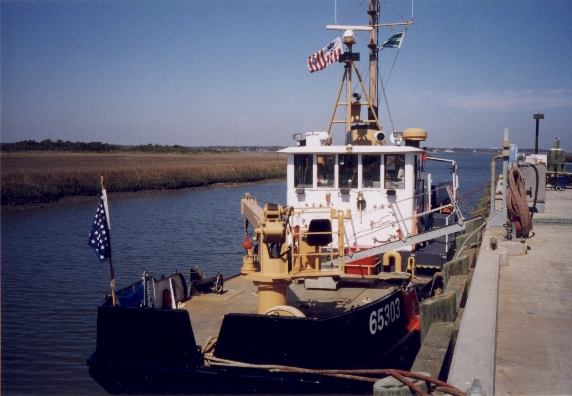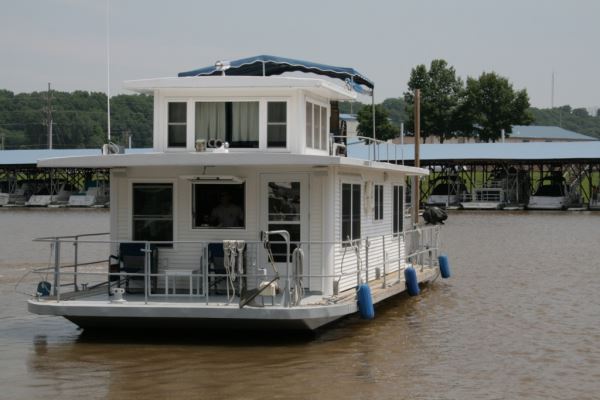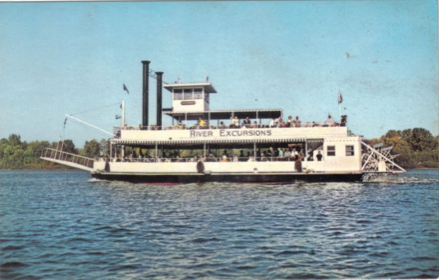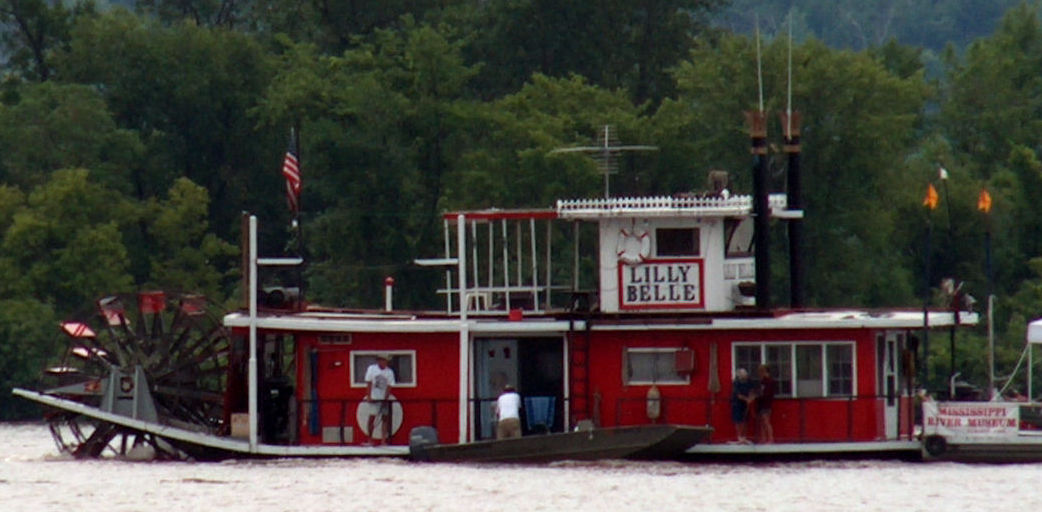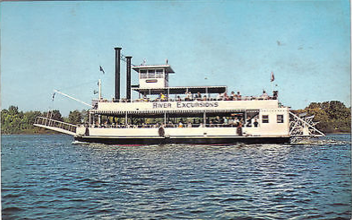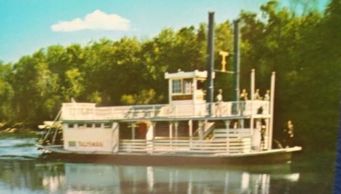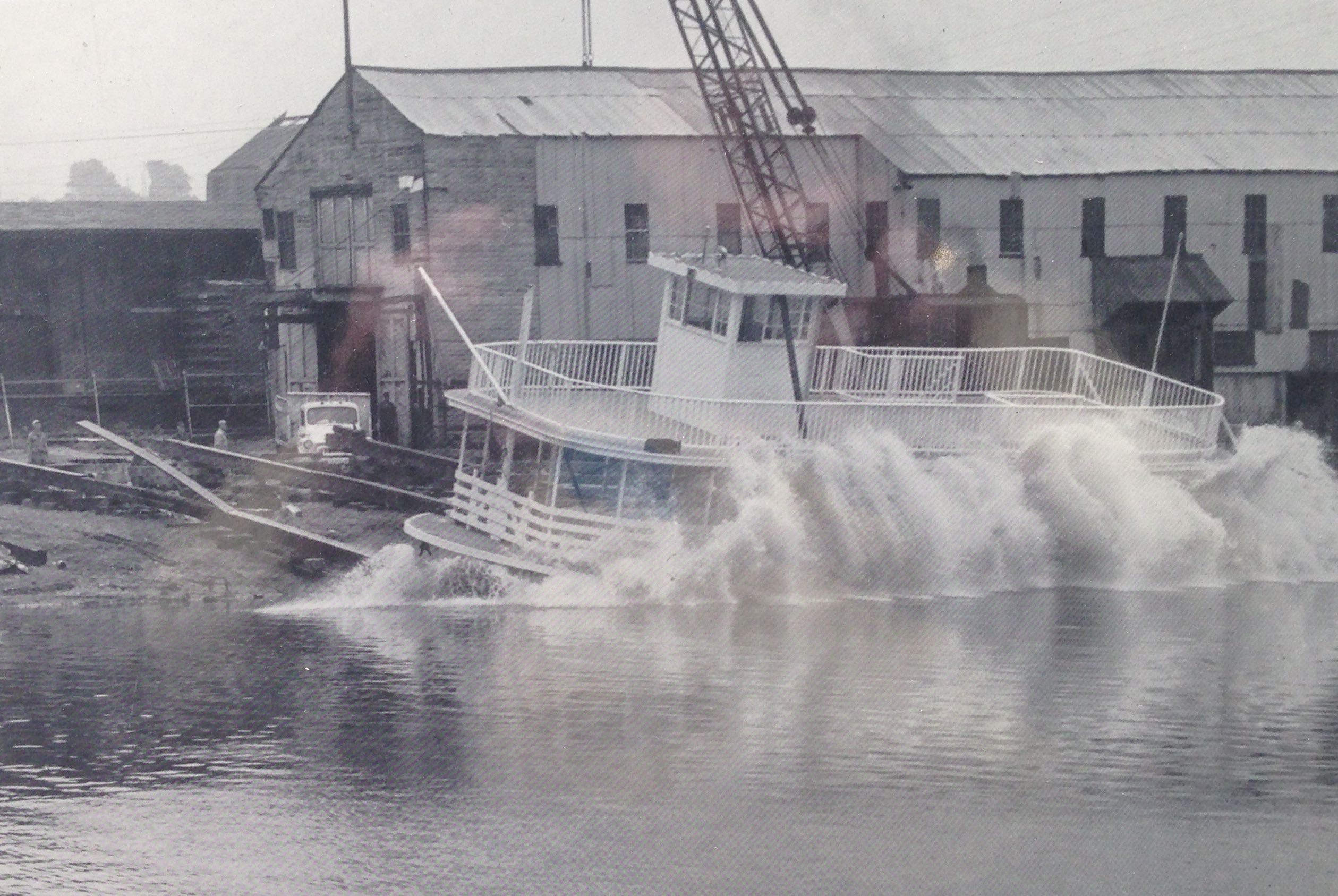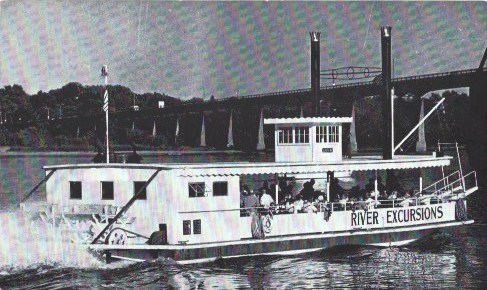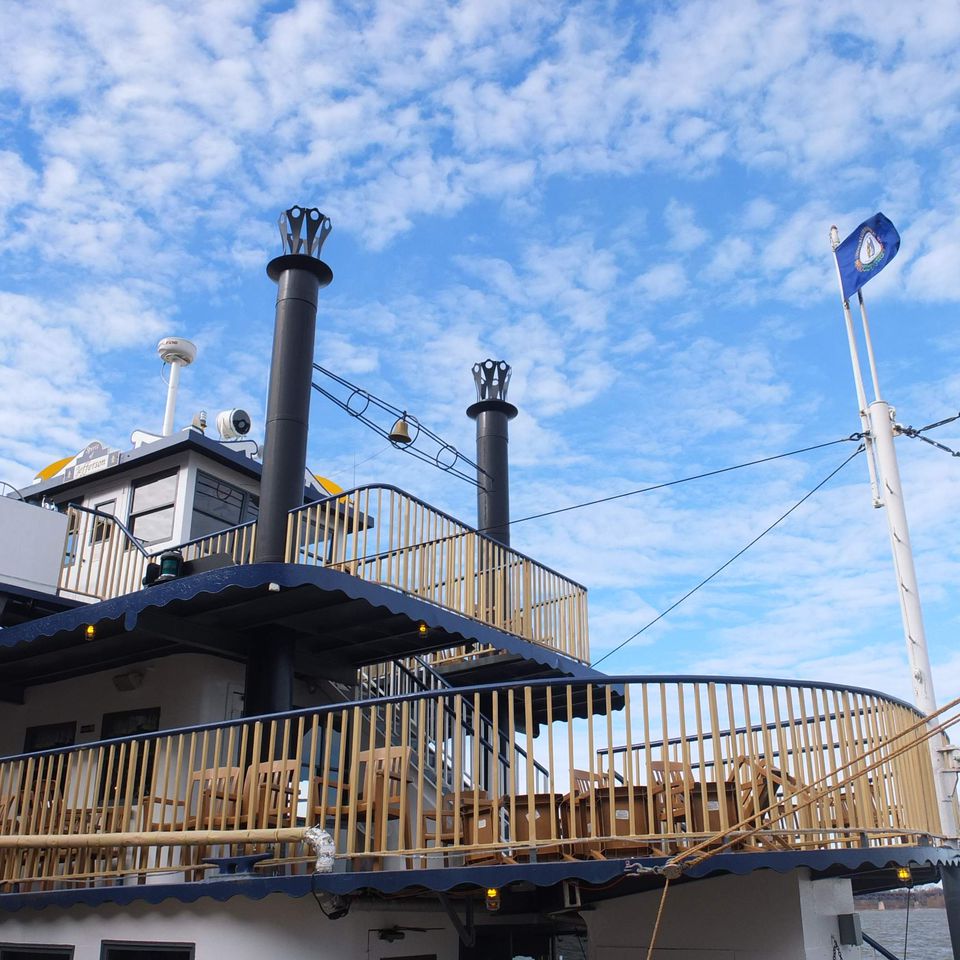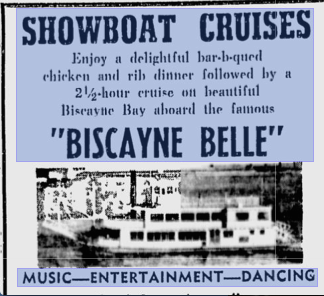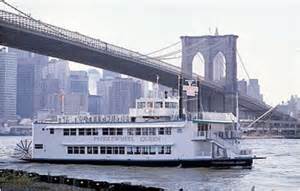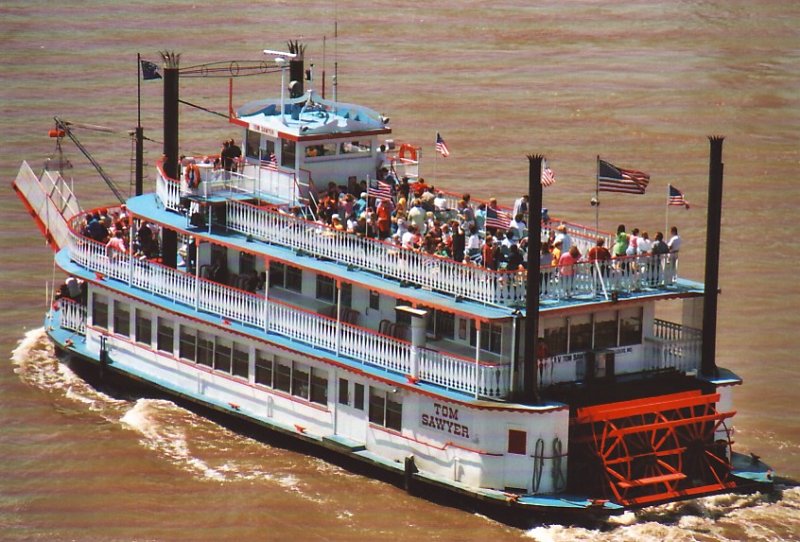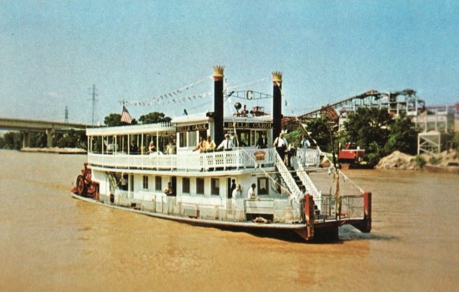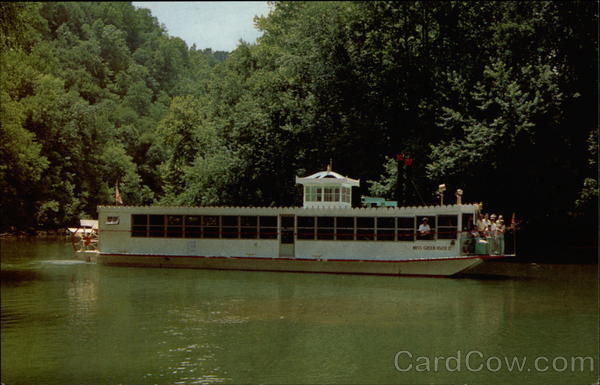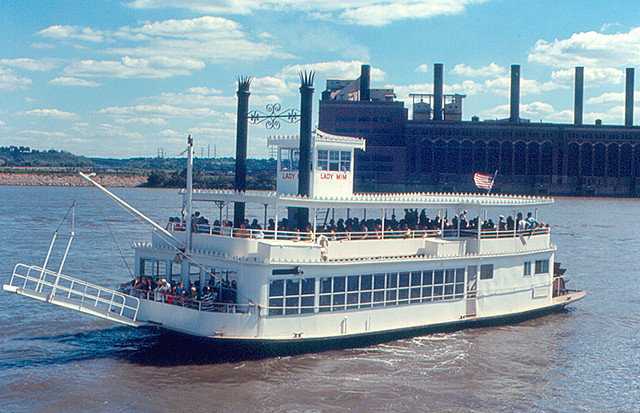Encyclopedia Dubuque
"Encyclopedia Dubuque is the online authority for all things Dubuque, written by the people who know the city best.”
Marshall Cohen—researcher and producer, CNN
Affiliated with the Local History Network of the State Historical Society of Iowa, and the Iowa Museum Association.
DUBUQUE BOAT AND BOILER WORKS
DUBUQUE BOAT AND BOILER WORKS. In April, 1904 equipment belonging to the IOWA IRON WORKS was sold to a new company headed by John F. KILLEEN, Jacob Schreiner, and another partner. This firm, known as the Dubuque Boat and Boiler Works, was originally planned to construct boilers and transport ships. (1)
The company received its first government order for dredge boats in 1907. Two boats were constructed of solid steel. They were 97 feet long, 45 feet wide, and one-half foot deep. The vessels were completed in Dubuque down to the installation of machinery which was not of local manufacture. The boats, named #5 and #6, were finished in St. Louis. (2)
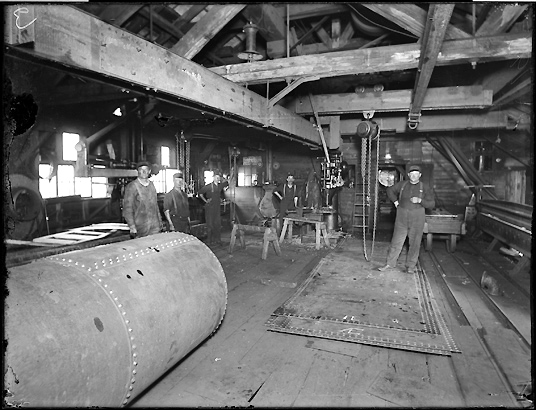
In 1908 Schreiner purchased the shares of his two partners, and the company remained in his family for more than sixty years. (3)
In 1908 the company received a contract to built twenty-eight barges for freight transportation. (4) In addition to the benefit this construction had on the local economy, the announcement promised cheaper transportation for area farmers and manufacturers. At the time, railroads were charging 7.5 mills per ton for freight; water transportation averaged 1.5 mills per ton. (5) At the same time the order for the barges was received, the company was working on two passenger boats and two towboats. The combined value on their orders was $250,000.
In 1927 Dubuque Boat and Boiler Works completed construction on three paddlewheel steamboats for the newly incorporated Upper Mississippi Barge Line. The first vessel completed was the C. C. Webber, and then came the S. S. Thorpe (later re-christened GEORGE M. VERITY in 1940), and finally the John W. Weeks. Samuel S. Thorpe was the first President of the Upper Mississippi Barge Line and was present at the launching when his daughter, Julia, christened the boat with a bottle of ginger ale, as champagne was illegal during PROHIBITION. The noted naval architect Thomas Rees Tarn, who accompanied the Thorpe on its maiden voyage, designed the three vessels. Cost of each vessel was $175,000, a considerable amount in 1927 when that same amount of money would have bought 600 new Model T Fords costing about $290 apiece. (6) The "S. S. Thorpe, named in honor of the first president of the Upper Mississippi Barge Line Company, became the second towboat to be used in reviving river transportation. At 10:10 AM on Monday, August 15, 1927, the S. S. Thorpe departed St. Louis with three barges, carrying 1600 tons of cargo. This maiden voyage was a major turning point in American transportation history for it marked the re-opening of the Upper Mississippi River for the movement of commercial freight. (7)
Nature often determined whether the plant was successful. In 1911 the B. F. Yoakum lay at its moorings in Dubuque for six months waiting for sufficient water to proceed south on the MISSISSIPPI RIVER. The "June rise" had not been sufficient for the boat to "shoot the rapids" at Keokuk. The boat took up so much space in the ICE HARBOR that its departure was compared to "the principal store buildings on one of the principal blocks of Main Street suddenly being taken away." (8) The Yoakum was used as an advertisement its entire journal to Baton Rouge, Louisiana. Each side of the boat carried signs reading:
Built by the Dubuque Boat Works.
Dubuque Wants More Factories.
For information write:
Dubuque Industrial Corporation (9)
In addition, Dubuque's Committee on Statistics and Publicity made arrangements for every newspaper on the Mississippi to receive a description of an article about the boat along with a suitable "cut" for newspaper use. It was expected that the newspapers would be glad to publish both. (10)
In 1912 the company was so busy that it employed all the men who made application. There were five boats in production with a spring deadline including the dredge "Waterway" for the United States War Department's use on the Arkansas River. (11)
In 1914 the company announced that it had been given a government contract to build a combination dredge and snag boat. Named the "Dennison," it was to be used on the Red River in the vicinity of Dallas, Texas. The company, unofficially, was also given contracts for the construction of two boats to be used near Peoria, Illinois and Nashville, Tennessee. The contacts meant a $130,000 boost to the local economy and full employment at the Works for a year. (12)
In March, 1916 two ferryboats were completed and ready for the launch. The "Rockport" and "Queensboro" were constructed for the Crescent Navigation Company of Evansville, Indiana. Ira DAVENPORT came to Dubuque as a construction superintendent for the company and became the General Manager and Secretary-Treasurer the following year. (13)
Willow, a 200-foot, 1,070 ton, side paddlewheel river tender, was built by the Dubuque Boat & Boiler Works for the US Lighthouse Service for service on the Mississippi River. Commissioned in 1924, she was decommissioned and transferred to the Army Corps of Engineers in 1945. At an average construction cost of $250,000 each, the "L. S. Thorne" (1898), "Pelican" (1902), "Albatross" (1907) and "B. F. Yoakum" (1910) and the “Willow” (1924) were important contributors to the Dubuque economy. The 305 foot-long boat "Albatross" had the capacity of 16 railroad cars and was the largest of its type built on the Upper Mississippi. After twelve years of duty at Vicksburg, Mississippi, the boat was returned to Keokuk and lengthened 57 feet. Rebuilt again by the Steckfus lines, the boat was renamed the "Admiral" and became a 4,400 passenger excursion boat by 1960. (14)
The demands of WORLD WAR I put impossible demands on the railroad system in the United States. The Dubuque Boat and Boiler Works, the second oldest boat manufacturing firm in the United States and the only one of its kind on the Mississippi River, was used during the war for the manufacture of tows, barges, dredges, submarine chasers, and Coast Guard cutters. (15)
Nature sometimes made launching newly constructed craft difficult. In October the launching of the $260,000 Del Commune was made possible only after the harbor was dredged to a minimum depth of eleven feet. (16)
One of the lesser known features of the Boiler Works around 1933 was its prevalence of athletes. Ira DAVENPORT, the president of the company, had been a star in the past. Current athletes using the hard work of the plant to build their muscles as well as earn a living in the off season were Jay BERWANGER and Oran H. PAPE. (17)
During WORLD WAR II, the Dubuque Boat and Boiler Works manufactured more than twenty vessels for the military including Coast Guard cutters, tenders, mine planters and towboats. (18) In 1941 the company had a contract for the construction of quartermaster distribution box boats used in the defensive mining of United States coastal waters. Each boat took seven days for production. (19) In June, 1941 two cutters were launched. (20) Other ships included tugs and tenders. Grease for the launching slide was difficult to find during the war. For one launch, bananas were pureed and spread on the wooden rails to allow the completed ship to slide into the water. (21) An estimated twenty boats were built during the war. Two new types were mine layers and tenders.
With the end of the war, Dubuque Boat and Boiler Works converted to the production of pleasure craft and was soon rated as one of the major excursion boat manufacturers in the nation. The excursion boat business began gradually. Henry Barr Miller, President and Capt. Dennis Trone, Vice President followed an idea to provide the wealthy post-war public with a unique product recalling the great excursion boats of the 1920s. (22) These new boats were efficient, attractive, and affordable to small operators. All featured the look of the old time steamboats. Some pulled a fake wheel, others were powered by chain-driven wheels, and some had hydraulic rams operating at high pressure much like a true steamboat.
One of the first boats designed by Trone was the Talisman. Built for a company he and his brother called Sangamon Packet Company, the vessel was a relatively small stern-wheeler (60'x16'x3') which operated until the early 1990s at Lincoln's New Salem State Park in Illinois. (23) The vessel used hydraulic rams to operate its paddlewheel. Burning barely 20 gallons an hour and not requiring a licensed engine room staff, the vessel operated with two deck crew (who doubled in the bar and concession stand) and a pilot who could also serve as captain. A replica of a stern-wheeler used for mail and passengers was purchased by St. Louis businessmen as a yacht. In the 1950s the company manufactured a semi-custom houseboat called "Voyager." It was 42 feet long with a sixteen foot beam. Compared to the sleek models today it weighed an incredible 20 tons due to its construction with 3/16 inch steel.
In 1967, Robert E. Bonson, the grandson of Robert BONSON came to Dubuque as an agent of the Emerson Electric Company of St. Louis. An aerospace manufacturer of many products including weapons turrets for helicopters and bombers, Emerson wanted to purchase a company to build "Swift boats" to which they could install turrets. These boats would then be sold to the Army and Navy for use in the river warfare going on during the VIETNAM WAR. Bonson was given a budget of $300,000 to buy and set up the plant for production. (24)
Bonson explained his purpose to Dennis Trone, the general manager and owner of 49% of the stock in the firm. According to The Bonson Diaries, information obtained later revealed stated that Trone expressed his concern to the widow of Henry Barr Miller who decided to sell Trone enough stock to give him 51% of the company. Trone then declined further discussions about selling the plant. (25)
In 1967 the company launched the first commercial dry dock between St. Louis, Missouri and St. Paul, Minnesota. The floating U-shaped structure allowed the repair and rebuilding of large river boats. It was expected the dry dock would bring in an additional $200,000 annually in business. When fully utilized, an additional forty employees would be hired. Company officials stated they had wanted to own a dry dock for years, but waited until the floodwall became certain. (26)
All production was not focused on smaller pleasure craft. The JULIA BELLE SWAIN looked like a steam paddle-wheeler and was designed to carry 400 passengers on its three decks. (27) A loss of business and federal tax liens forced the business to close in 1972. (28)
Boats Constructed by the Dubuque Boat and Boiler Works: (29)
See: BOAT BUILDING
Name-----Purchaser-----Type of Boat-----Year

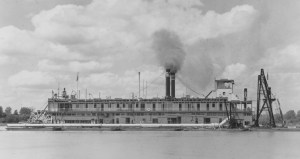
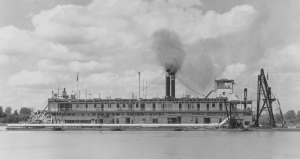

28 barges-----Mississippi River Gas-Electric Navigation Co.------Freight barge----1909
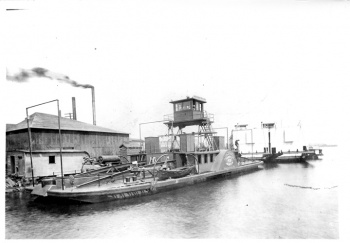
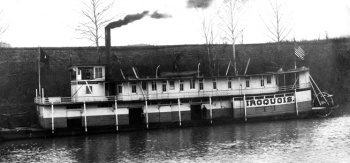
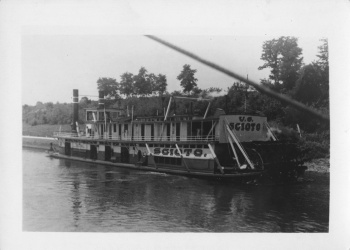
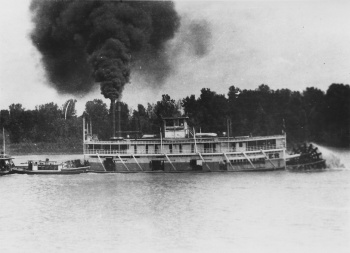
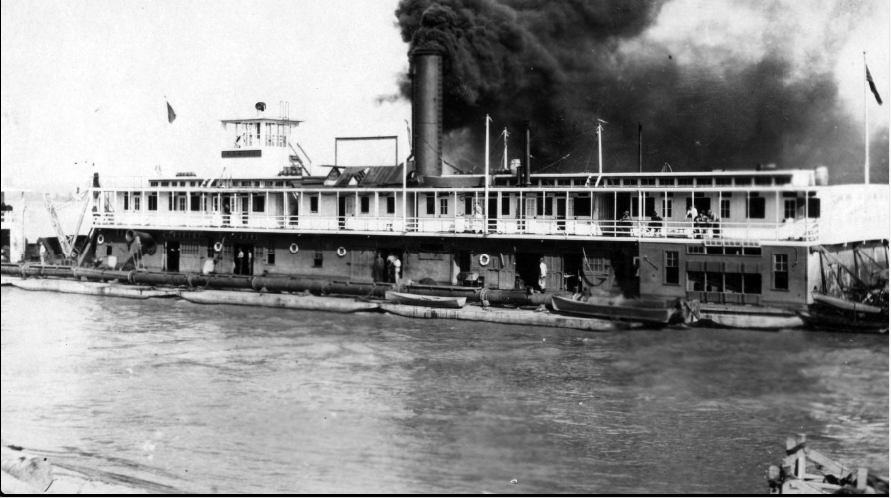

G. H. Tamble---------------Warner & Tamble--------Towboat---------1915
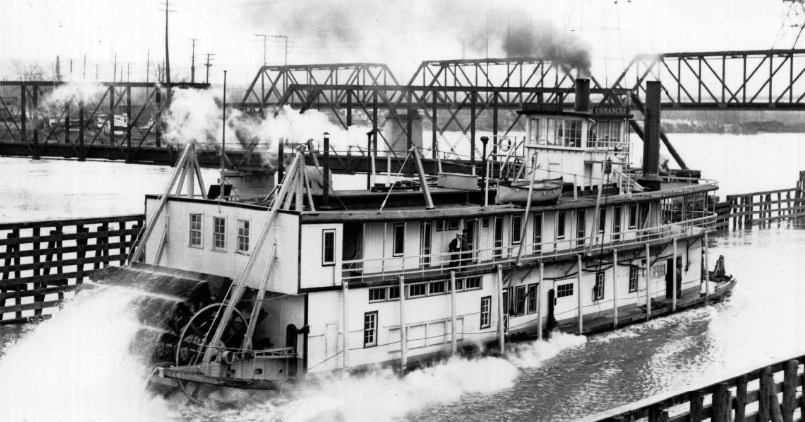
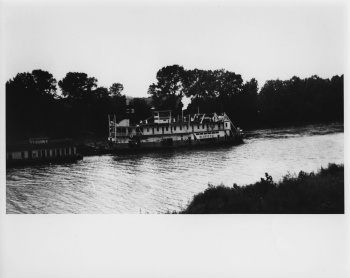

Rockport----------Crescent Navigation------------Ferry----------1916
Queensboro--------Crescent Navigation------------Ferry----------1916
SC 150------------US Navy-------------Sub Chaser---------------1918
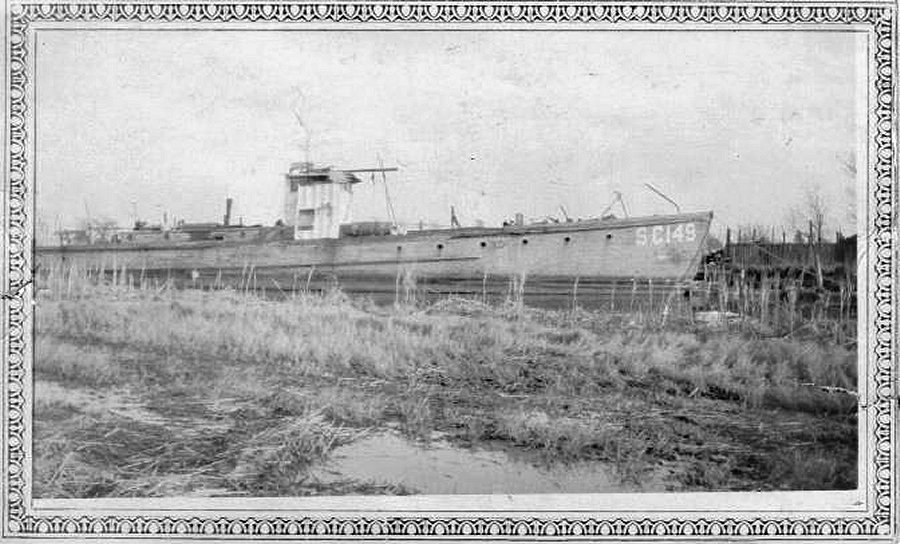

Mississippi-----(unclassified)-----1922
425---United States Engineers-----Oil tank barge-----1924
426---United States Engineers---- Oil tank barge--------1924
Five barges---United States Engineers at Rock Island---1924
Tow boat---United States Engineers at Nashville---1924
Sand barge---Missouri Portland Cement Company---1924
Auto ferry---Wisconsin Highway Commission---1924
20 steel pontoons---United States Engineers---1924
Clipper----------Crain Bros.-----------1924
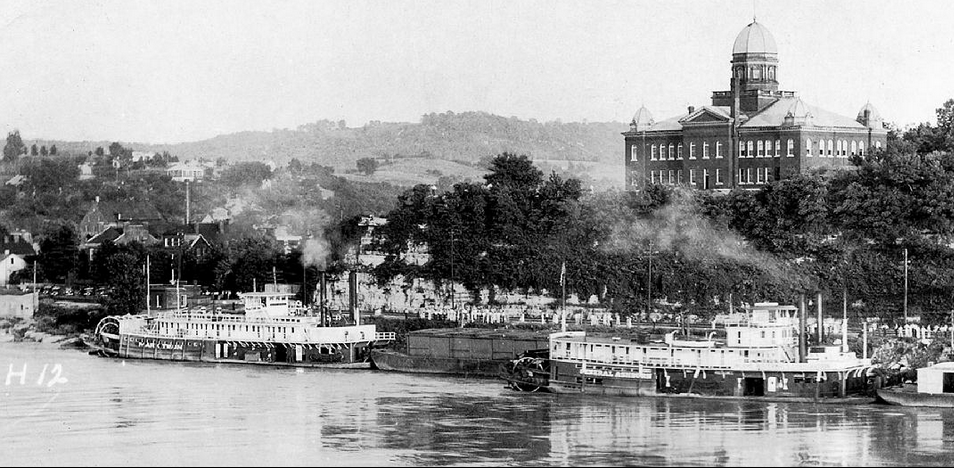


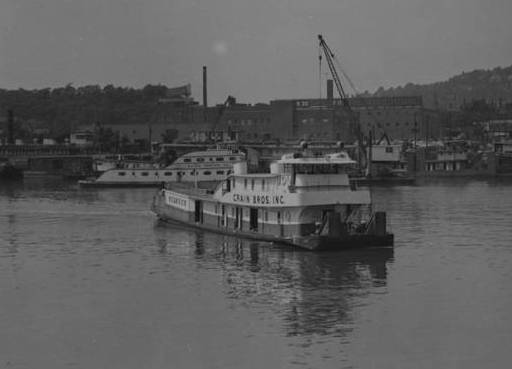
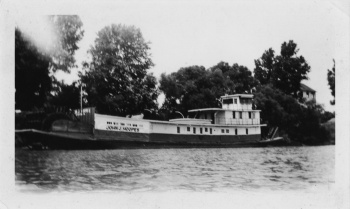
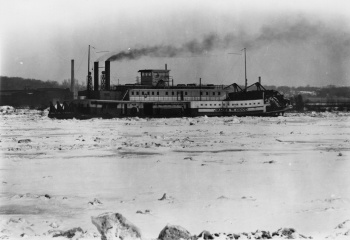

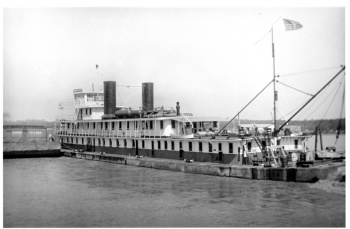
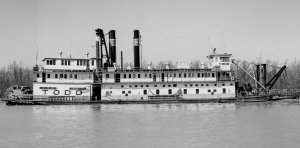
Sea Inspector---------Tideland Specialty---------Crew Boat---------1932

Pine-----Corps of Engineers-----Flood Control-----1934
Oak-----Corps of Engineers-----Flood Control-----1934

Chaperone---------Brokamp & Bressler---------Towboat---------1935
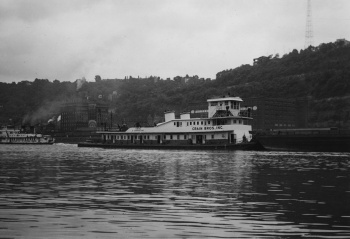
Charles Zubik---------Charles Zubik-----------Towboat------------1938
Captain J. W. Banta-------Tugboat-----------1938

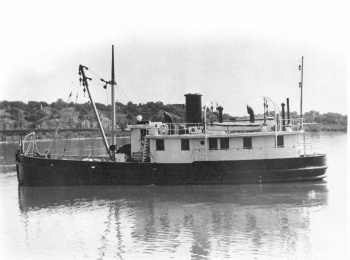
SYCAMORE-----US Coast Guard-----Tender-----1941
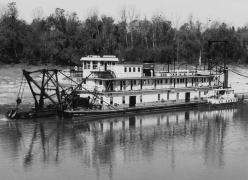
Devious-------Tugboat-------1942
Dorothy L.-------Tugboat-------1942
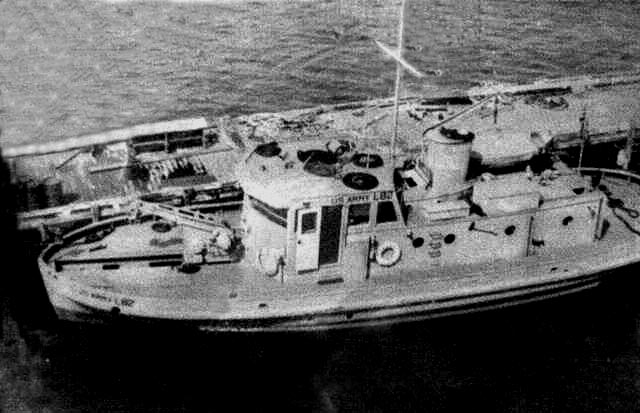
L 74-----US Army-----Dist. Box Boat-----1942
L 75-----US Army-----Dist. Box Boat-----1942
L 76-----US Army-----Dist. Box Boat-----1942
L 77-----US Army-----Dist. Box Boat-----1942
L 100-----US Army-----Dist. Box Boat-----1942
L 101-----US Army-----Dist. Box Boat-----1942
ST 48-----US Army-----Tug-----1943
Cosmos-----US Coast Guard-----Tender-----1943
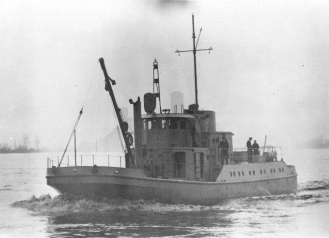
Rambler-----US Coast Guard-----Tender-----1943
Brier-----US Coast Guard-----Tender-----1943

Primrose-----US Coast Guard-----Tender-----1944
Verbena-----US Coast Guard-----Tender-----1944
Maranatha--------Tugboat--------1945
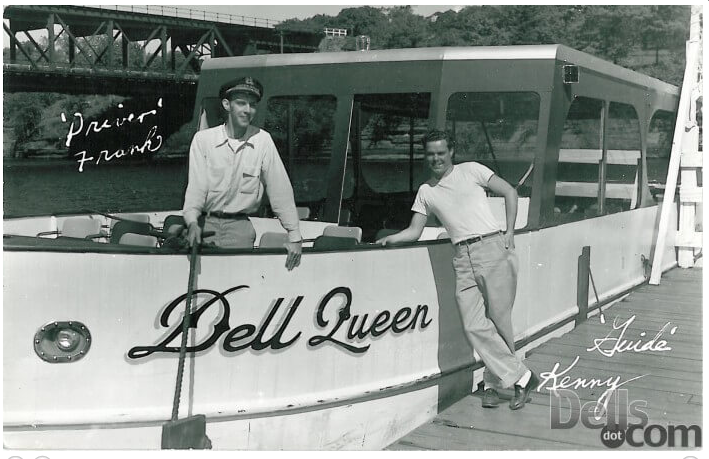

Tow boat--coal barge terminal for Savanna, Illinois--the boat had no rudder. A "universal joint" allowed the twin screws to be rotated 360 degrees. The three diesel engines had a total of 3,000 horsepower. 1951 (30)
Quiver-----Havana Dock Enterprises LLC-----Towboat-----1951
Mary--Molo Sand and Gravel--Towboat--1951
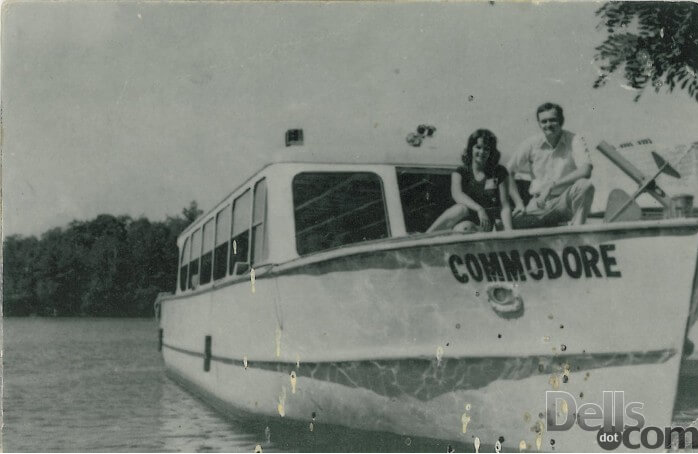
Ferry Barge #6-----State of Illinois------Ferry Barge----1952
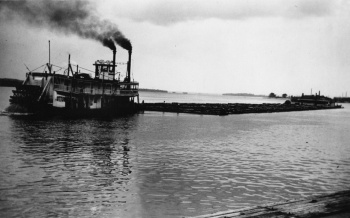
Dan----------Tugboat-------1954
Tar Heel-----Star Towing Corporation-----Towboat-----1955
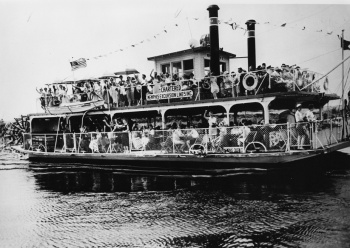
Dorothy A.-----Allgire Tug Boat Co.-----Towboat-----1955
Becky Thatcher III-----Paul L. Adams-----Recreational-----1956
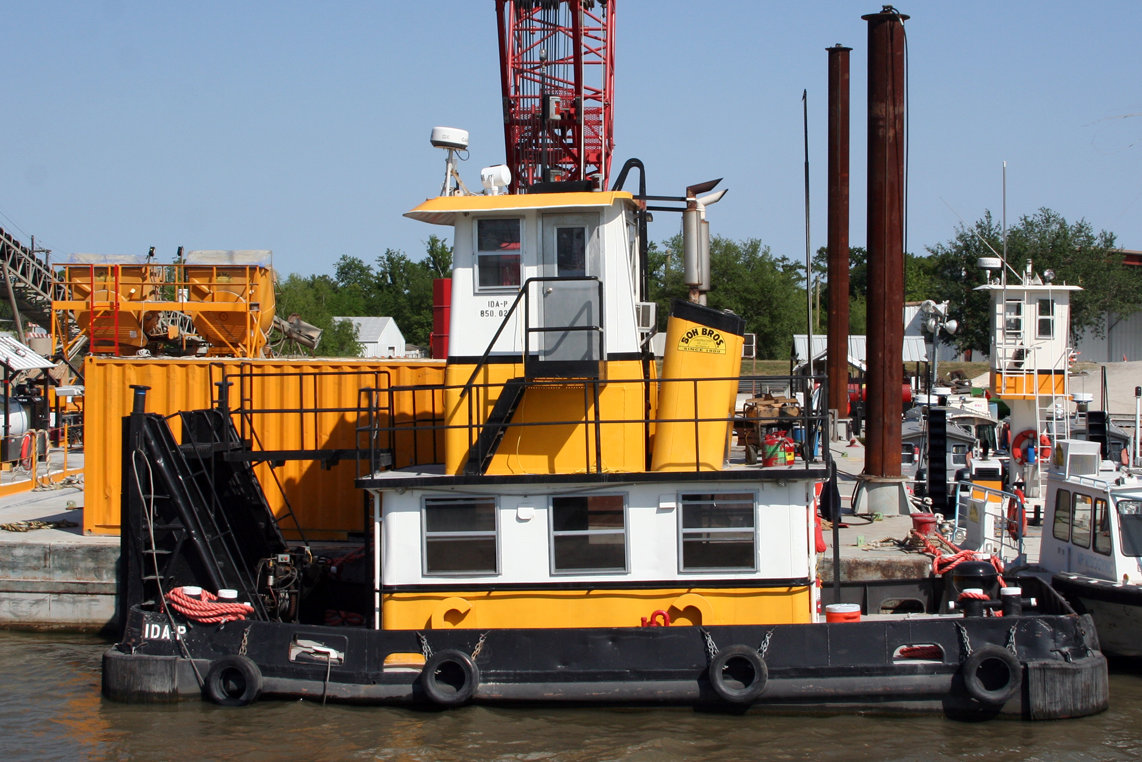
Ethlyn P.-----Boh Bros Construction Co LLC-----Towboat-----1957
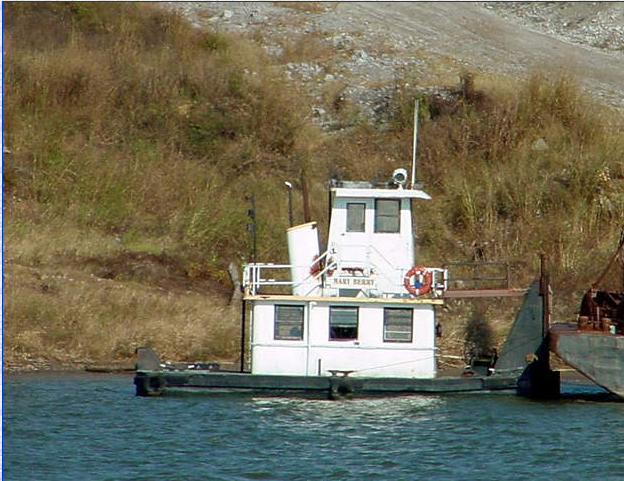
Bayou Belle-----Ralph Martin-----Excursion Boat-----1959
Missouri Belle--Interstate Amusement Park--1959
Running River--?--Excursion Boat--1959
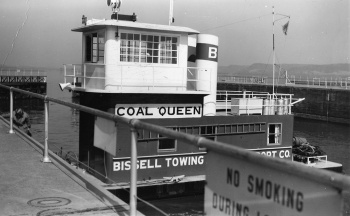
Lucy Woodstock-----EXPLORE Institute-----Research Vessel-----1959

Wenonah--Grand Portage (Isle Royale)--Excursion Boat--1960

Sunliner-----Wendella Sightseeing-----Excursion Boat-----1961
Slufoot-----Charles C. Gram-----Recreational-----1961
Luella Bella Belle--Cal Harbor Excursions--Excursion Boat--1962
Showboat--Touristville Boat Company--1962
Grove River Belle--Anderson Exterprises--Excursion Boat later renamed Gateway Clipper, City of Nauvoo, City of Champions, Good Ship Lollipop, Countess--1962
Ole Susannah---River Cruises Inc--Excursion Boat later renamed First Lady of Jacksonville and Lady St. Johns
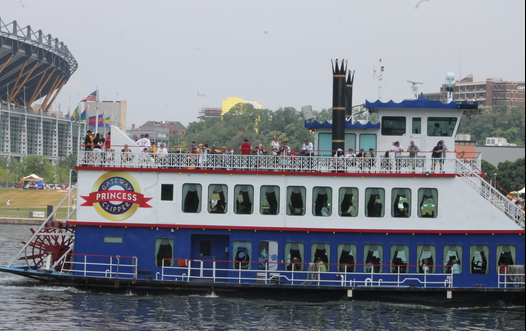


Showboat-----Rainbow River Tours-----Excursion Boat-----1963
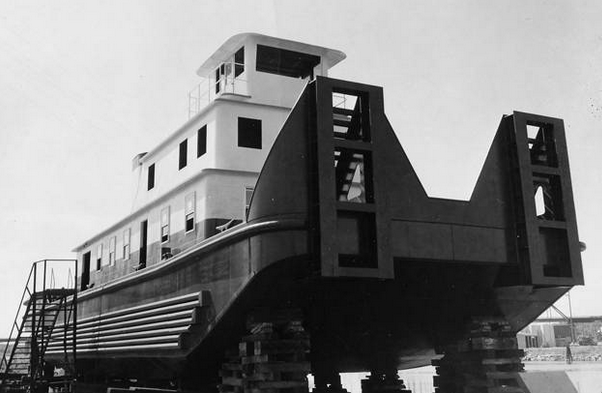
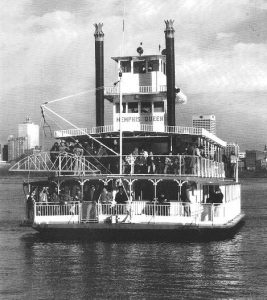
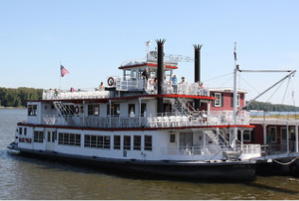
Tom Sawyer--- Loc-Wood Boat & Motors Inc.---Excursion Boat---1965.


Prairie Gal II-----River Excursions-----Excursion Boat-----1966
Harbour Towne Ferry-----Yacht Time at Harbour Towne-----Excursion Boat-----1966

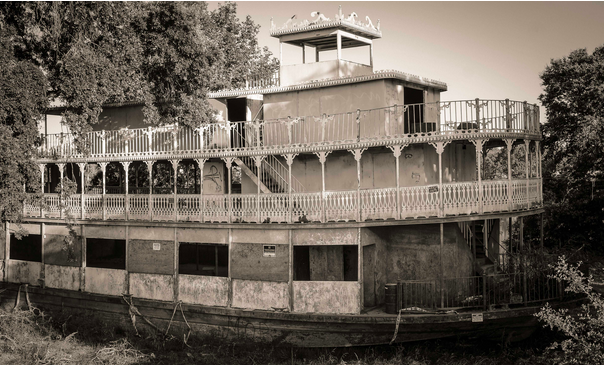
The Sandy-----Forever/NPC Resorts LLC-----Excursion Boat-----1968
?-----?-----Yacht-----1968
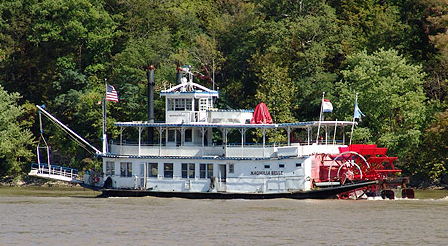
Arc-----L. I. F. E.-----Tanker-----1969

Don Rob T.-----Quarry Creek Land Developers-----Recreational-----1970

City of New Madrid-----St Jude & New Madrid Harbor-----Towboat-----1971
The 1916-1917 White's Dubuque County Directory listed 550 3rd.
The 1939 to 1970 Dubuque City Directory listed the company as the Dubuque Boat & Boiler Company at 302 E. 3rd.
See: BOAT BUILDING
---
Source:
1. Kruse, Len. "The Dubuque Boat and Boiler Works," My Old Dubuque. Center for Dubuque History, Loras College, Dubuque, Iowa 2000 p. 111-116
2. "Two Dredge Boats Are Being Built," Telegraph Herald, Apr. 14, 1907, p. 21. Online: http://news.google.com/newspapers?id=TMRBAAAAIBAJ&sjid=sqkMAAAAIBAJ&pg=5501,5031817&dq=dubuque+boat+and+boiler+works&hl=en
3. Fryxell, David. "Boat Building Tradition Helps Launch Museum Exhibit," Dec. 4, 1983, p. 8. Online: http://news.google.com/newspapers?id=Y-lFAAAAIBAJ&sjid=C_gMAAAAIBAJ&pg=4695,374253&dq=dubuque+boat+and+boiler+works&hl=en
4. "Contract Let for 28 Barges," Telegraph Herald, Sept. 20, 1908, p. 5. Online: http://news.google.com/newspapers?id=H_lCAAAAIBAJ&sjid=-qsMAAAAIBAJ&pg=5165,6195979&dq=dubuque+boat+and+boiler+works&hl=en
5. Ibid.
6. Tschiggfrie, David. "The George M. Verity Story," (ed. Rich Taylor). Online: http://www.geomverity.org/George%20M.pdf
7. Ibid.
8. "Advertises City the Length of River," Telegraph Herald, Oct. 15, 1911, p. 1. Online: http://news.google.com/newspapers?id=wxJeAAAAIBAJ&sjid=CmANAAAAIBAJ&pg=4188,6804129&dq=dubuque+boat+and+boiler+works&hl=en
9. "Use Yoakum to Advertise City," Dubuque Telegraph-Herald, April 27, 1911, p. 2
10. "Boat Works Are Busy," Telegraph Herald, Jan. 24, 1912, p. 9. Online: http://news.google.com/newspapers?id=aBNeAAAAIBAJ&sjid=EWANAAAAIBAJ&pg=3332,3078537&dq=dubuque+boat+and+boiler+works&hl=en
11. "Will Launch Two Ferry Boats Soon," Telegraph Herald, Mar. 26, 1916, p. 10. Online: http://news.google.com/newspapers?id=4w1eAAAAIBAJ&sjid=4V8NAAAAIBAJ&pg=3595,634161&dq=dubuque+boat+and+boiler+works&hl=en
12. Ibid.
13. Ibid.
14. "The 'Albatross' Heads for Vicksburg," Telegraph Herald, Aug. 3, 1960, p. 12
15. "Contracts Will Net $130,000," Telegraph Herald, June 4, 1914, p. 4. Online: http://news.google.com/newspapers?id=XgheAAAAIBAJ&sjid=318NAAAAIBAJ&pg=1901,107360&dq=dubuque+boat+and+boiler+works&hl=en
16. "Work Started on Two 'Sub Chasers," Telegraph Herald, May 10, 1917, p. 3. Online: http://news.google.com/newspapers?id=AQleAAAAIBAJ&sjid=6V8NAAAAIBAJ&pg=6710,1896930&dq=dubuque+boat+and+boiler+works&hl=en
17. "Berwanger Trains With Steel in Dubuque Yards for 1933 Grid Campaign," Telegraph-Herald, June 25, 1933, p. 14
18. Reber, Craig D. "Oh Buoy! Coast Guard Cutter Marks 50 Years," Telegraph Herald, May 31, 2015, p. 1
19. "Big Tow Boat Launched Here," Telegraph Herald, Oct. 24, 1937, p. 1. Online: http://news.google.com/newspapers?id=-OxBAAAAIBAJ&sjid=GaoMAAAAIBAJ&pg=2309,4651556&dq=stout+house+dubuque&hl=en
20. "Fifth Quartermaster Boat to be Launched," Telegraph Herald, Nov. 10, 1941, p. 4. Online: http://news.google.com/newspapers?id=r1lFAAAAIBAJ&sjid=2rsMAAAAIBAJ&pg=6707,6812179&dq=dubuque+boat+and+boiler+works&hl=en
21. "Dubuque Launches Two Cutters," New York Times, June 17, 1941. Online: https://www.google.com/search?q=Dubuque+Boat+and+Boiler+Works&tbs=nws:1,ar:1&source=newspapers#q=Dubuque+Boat+and+Boiler+Works&start=40&tbm=nws&tbs=ar:1
22. Fryxell.
23. Vasconcelos, Travis, "Dubuque-Built Diesel Excursion Boats," Online: http://www.steamboats.org/history-education/dubuque-built-diesel-excursion-boats.html
24. Bonson, Robert E. The Bonson Diaries, June 16, 2008, p. 7 Available in the CARNEGIE-STOUT PUBLIC LIBRARY
25. Ibid., p. 8
26. Hooten, Leon. "First Big Dry Dock in This Area is Launched," Telegraph Herald, Nov. 12, 1967, p. 33
27. Ibid.
28. Ibid.
29. "Dubuque Boat and Boiler Works." Online: http://shipbuildinghistory.com/shipyards/small
30. "Plant Stages First Launching of the Year," Telegraph-Herald
http://www.steamboats.org/history-education/dubuque-built-diesel-excursion-boats.html
Construction information for 1924--"150-Ton All-Steel Barge Launched," Telegraph-Herald, March 23, 1924, p. 16


